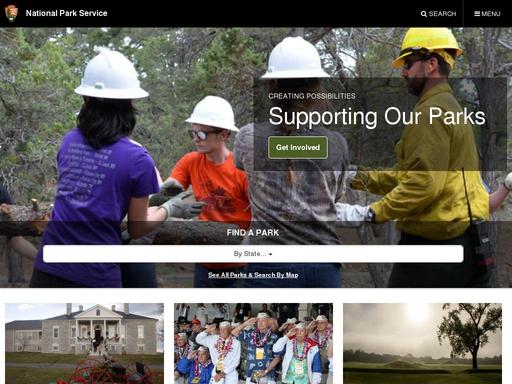Rate Voyageurs National Park
Learn and Explore
Since 1916, the National Park Service has been entrusted with the care of our national parks. With the help of volunteers and partners, we safeguard these special places and share their stories with more than 275 million visitors every year. But our work doesn’t stop there.
We are proud that tribes, local governments, nonprofit organizations, businesses, and individual citizens ask for our help in revitalizing their communities, preserving local history, celebrating local heritage, and creating close to home opportunities for kids and families to get outside, be active, and have fun.
Taking care of the national parks and helping Americans take care of their communities is a job we love, and we need—and welcome—your help and support.
Our Mission
The National Park Service preserves unimpaired the natural and cultural resources and values of the National Park System for the enjoyment, education, and inspiration of this and future generations. The Park Service cooperates with partners to extend the benefits of natural and cultural resource conservation and outdoor recreation throughout this country and the world.
Frequently Asked Questions
How do I obtain a park entrance pass?
Only 118 of your 417 park sites charge entrance fees. You can obtain park entrance passes by visiting a park site that charges an entrance fee. Entrance fee sites have passes available; we recommend calling a park prior to your visit. (See the park search to locate a specific park.) There are a number of entrance passes available, including park-specific passes as well as passes that offer entrance to more than 2,000 federal recreation sites in addition to the national parks (Annual, Military, Senior, 4th Grade, Access, and Volunteer passes). Learn more about the America the Beautiful – The National Parks and Federal Recreational Lands Pass.
About this location:
National Park
Operating Hours & Seasons
All Park Hours
Voyageurs is open 24-hours a day, although activities and services are limited after visitor center hours. Please note that early spring and late fall may present hazards on the lake with thin ice, please use caution.
Standard Hours
- Sunday:Open 24 hours
- Monday:Open 24 hours
- Tuesday:Open 24 hours
- Wednesday:Open 24 hours
- Thursday:Open 24 hours
- Friday:Open 24 hours
- Saturday:Open 24 hours
Fees & Passes
Entrance Fees:
- $0.00 – Voyageurs Entrance Fee
No entrance fees associated with this park.
Entrance Passes:
- $0.00 – Entrance Pass
No park specific entrance pass associated with this park.
About
The Heart of the Continent
Voyageurs National Park lies within the heart of the North American Continent. Here you can see and touch rocks half as old as the world, experience the life of a voyageur, immerse yourself in the sights and sounds of a boreal forest, view the dark skies, or ply the interconnected water routes.
Leave your car behind and set out on the water highways of the North Woods.
Directions
Voyageurs National Park is located in Northern Minnesota. The park shares its northern boundary with Canada and lies just west of the Boundary Water Canoe Area Wilderness. The park visitor centers are accessible by car but in order to truly experience the park, one must leave their vehicle behind and access the park by boat.
Visitor Centers
Rainy Lake Visitor Center
Located on the shore of Black Bay with views across the water to the Kabetogama Peninsula. The Rainy Lake Visitor Center is open year-round, although hours of operation vary with the season. This visitor center serves people in the northern part of the park and is located 11 miles East on Highway 11 from International Falls, MInnesota. The visitor center offers an exhibit area, displays, a bookstore, a staffed information desk, a children’s activity table, and a theater for viewing the park film. Kabetogama Lake Visitor Center
Nestled along the south west shoreline of Kabetogama Lake, within the community of Kabetogama. The Kabetogama Lake Visitor Center is open during the warm, summer months only. Ash River Visitor Center
The Ash River Visitor Center is located in the historic Meadwood Lodge pictured above. Take a moment to explore this historic, rustic building. Watch your head, as some interior doorways were constructed for shorter individuals.
Weather
There are four distinct seasons in Voyageur country. The air is temperate during June, July, and August when periods of fine, mild weather prevail. The frost-free season averages 120 days from June to mid-September. The average ice-out date is May 3 but varies year to year. Annual precipitation (rain and snow) averages 25-28 inches in the park and snowfall ranges from 55-70 inches, but is highly variable. The first measurable snowfall occurs in late October and the last in late April or early May.









